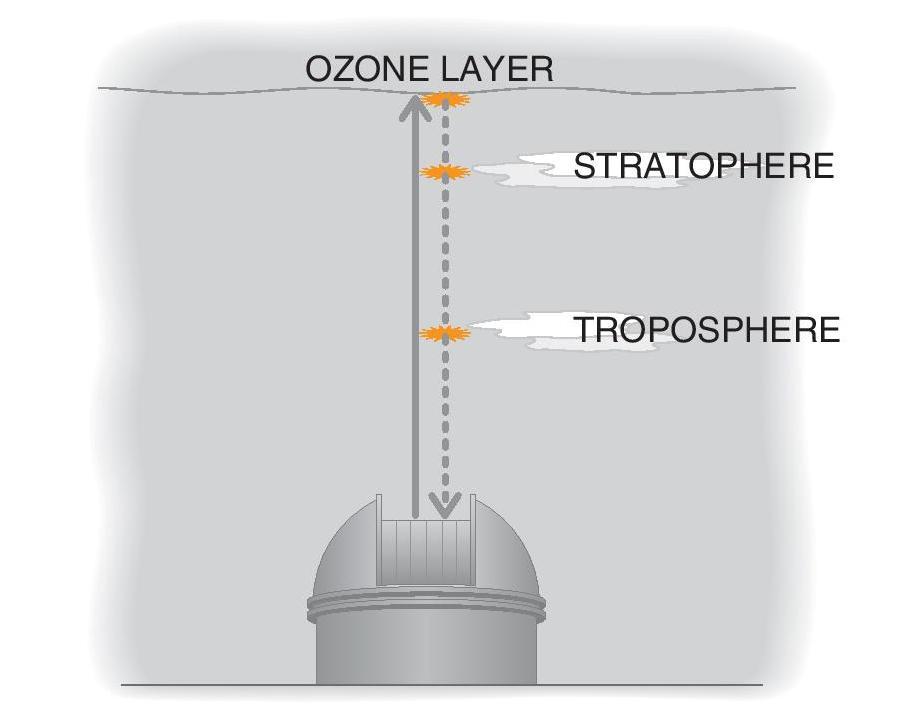
- HOME
- 產品介紹
- 半導體事業部
- Hamamatsu Photonics
- PMT (Photomultiplier Tube)
- PMT Modules
PMT Modules
![]() +886-2-8772-8910
+886-2-8772-8910
Hamamatsu offers a full lineup of photomultiplier tube (PMT) modules adaptable to various kinds of applications and measurements. Now you can make the best choice from among our PMT modules available with diverse device characteristics and shapes, analog or digital outputs, CPU and interfaces for control and data transfer with computers and even gating function.
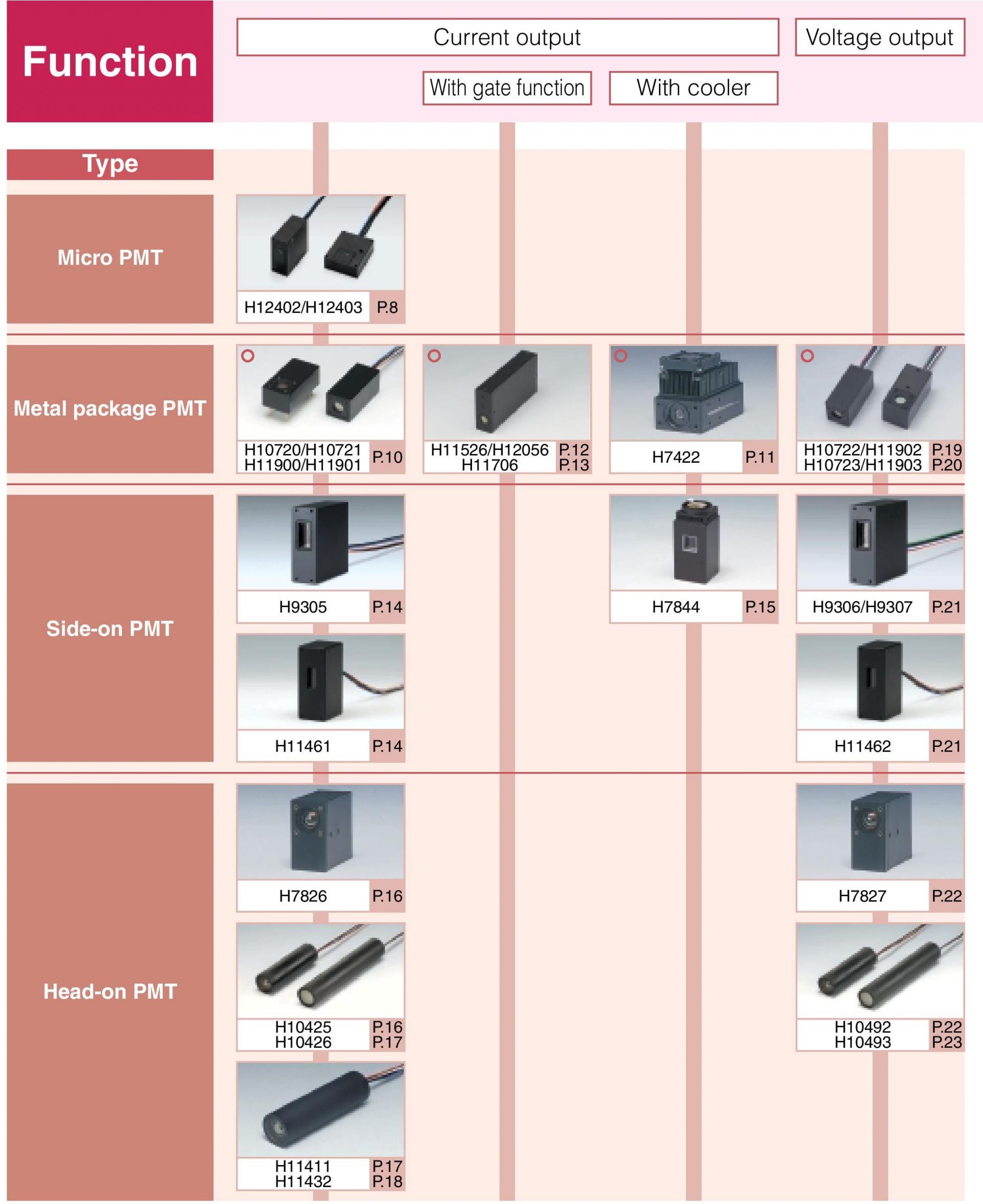
What is PMT module
The PMT module is basically comprised of a photomultiplier tube to convert light into electrical signals, a high-voltage power supply circuit, and a voltage divider circuit to distribute the optimum voltage to each dynode, all assembled into a single compact case. In addition to these basic PMT modules, Hamamatsu also provides modules having various additional functions such as signal processing, cooling and interface to PC.
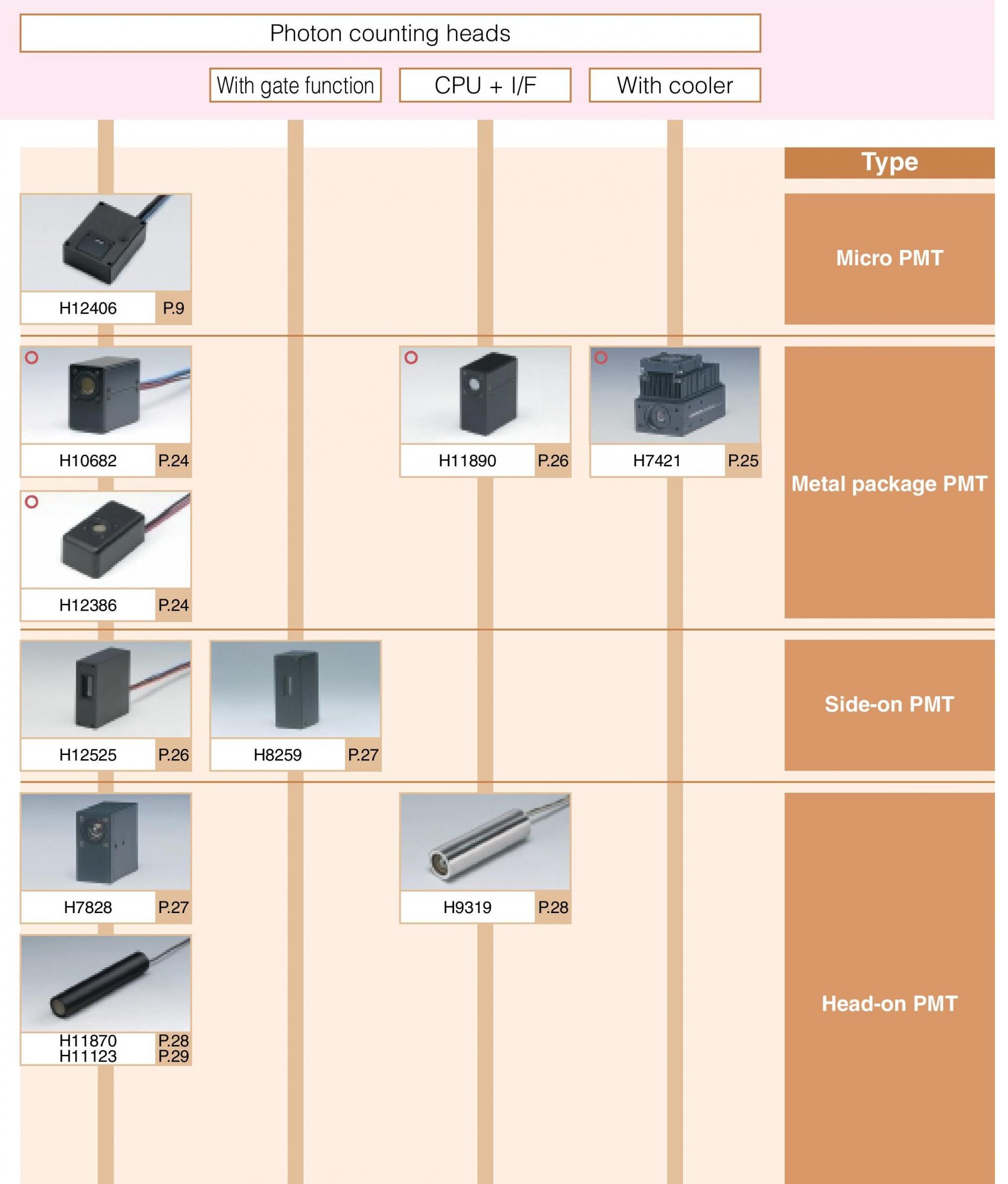
Constitution examples
Examples of how to use PMT modules and related products are shown below according to the type of measurement. The cable ends of the cable output types do not have connectors such as BNC connectors. We can install a connector (extra charge) if needed. Please specify the type of connector along with the cable length when placing your order.

Application examples
Flowcytometers
In a flowcytometers, cells labeled with fluorescent material flow in a solution along a flow cell while moving at a certain interval. A laser beam is then irradiated onto the cells and the scattered light from the cells and fluorescence from the fluorescent material are measured by a photomultiplier tube. Various kinds of information are acquired from the scattered and fluorescence such as cell surface antigens, cell periods, number of cells, immunity functions and reticulocytes, and the cells can also be separated from each other. Rapid advances are recently being made in irradiation by multiple lasers, 6-channel color analysis, high-speed operation, and compact flow systems.
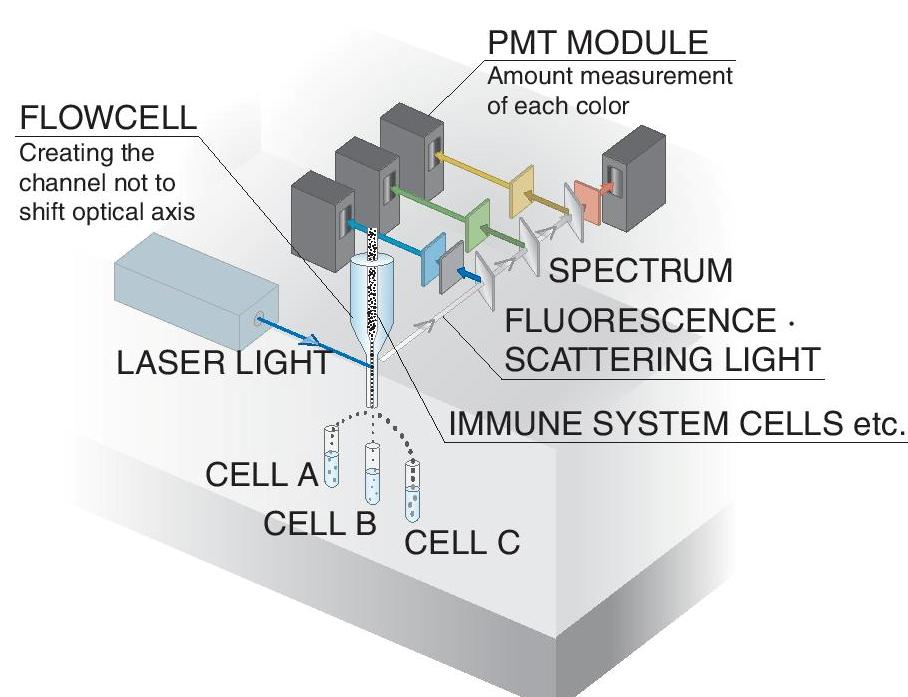
DNA chip reader
A DNA chip reader is used to analyze colossal amounts of genetic information. The DNA chip is a substrate on which a large amount of DNA is arrayed usually by a method using semiconductor lithographic technology, or a method dispensing the DNA onto a slide glass using a high-precision robot. On the DNA chip, hybridization is performed on the DNA labeled by a fluorescent dye. The DNA chip is then scanned by laser beam and by measuring the fluorescent intensity of the hybridized DNA spot, the genetic information is acquired from among the targeted DNA. (Hybridization is process to link 2 chains of DNA each having a complementary base.)
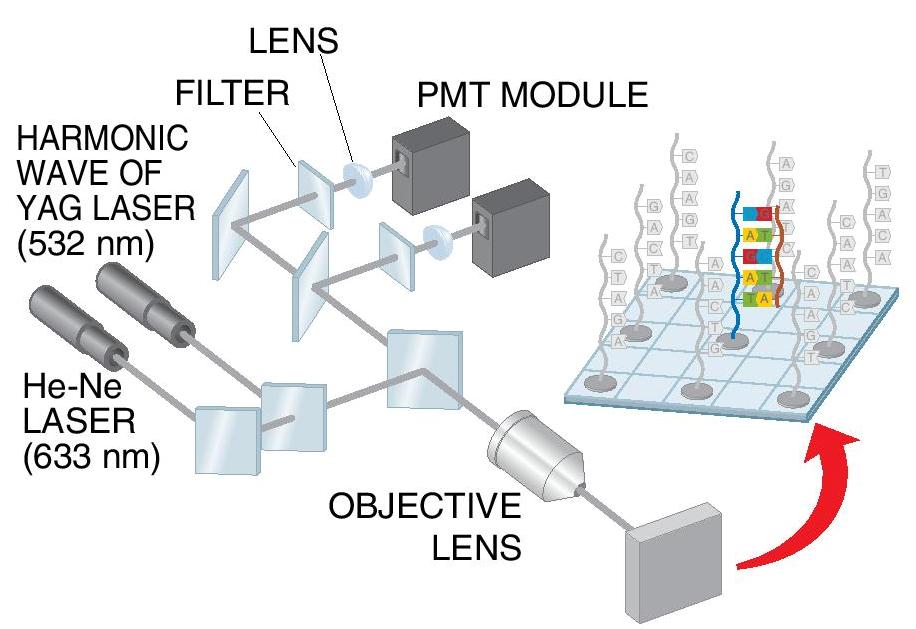
Blood inspection
Blood includes the antigen, which is the material causes immune reaction, of individual disease or bacteria which the person has. There is a blood inspection method which can decide that the subject has a disease or bacteria to what extent by reacting small amount of blood with an antibody as a reagent which bonds with specific antigen and measuring its amount of luminescence. While the study in order to improve efficiency of bonding or emission has been advanced, there has been also a demand to decrease the amount of sample used to measure. In order to achieve such demand, photomultiplier tubes are used as the detector which can perform single photon counting.

Hygiene monitor
The hygiene monitor is also called an ATP analyzer. This device extracts the ATP held in bacteria and cells and makes measurements by causing a reaction with the luminous reagent in the ATP using the firefly's light emission principle. This hygiene monitor is used for making purity checks at restaurants and factories producing foods, etc. In the test, the surface of the object for inspection is wiped with a cotton swab and the extent of dirt or contamination immediately found just by inserting the swab in the sanitary monitor. A great feature of the hygiene monitor is that the photon counting method allows highly sensitive measurements
using just an extremely small amount of sample material.

Multi-photon microscope
In this method, fluorescent molecules can be excited with near infrared light by letting the molecules absorb two photons almost simultaneously, and the resulting visible to UV fluorescence is observed. The cross sectional area absorbing the two photons is extremely small, so nearly all the fluorescence must be detected as a signal at any position from the focal point. Other advantages are that nearly twice the wavelength is used compared to excitation by one photon. This not only means that unwanted effects from scattering and background noise inside the sample due to excitation light are drastically reduced but also that damage to cells from UV light is minimized.

Time-correlated single photon counting
Time-correlated single photon counting is used to measure low-level light emitted from a sample when excited with a pulsed laser, based on the theory that a histogram obtained by repeatedly measuring the single photon many times at a slightly delayed timing represents a waveform of the emitted light. Electrical signals produced by a laser driver are slightly delayed and used as trigger signals while the PMT module detects the light emission from a sample. The PMT module output pulse signals are then input to a time-to-amplitude converter (TAC) that produces an electrical pulse in proportion to the time difference between a light detection signal and a trigger signal. A multichannel analyzer (MCA) creates a frequency distribution of the output signals from the TAC, to obtain a waveform of the light emission of the sample.
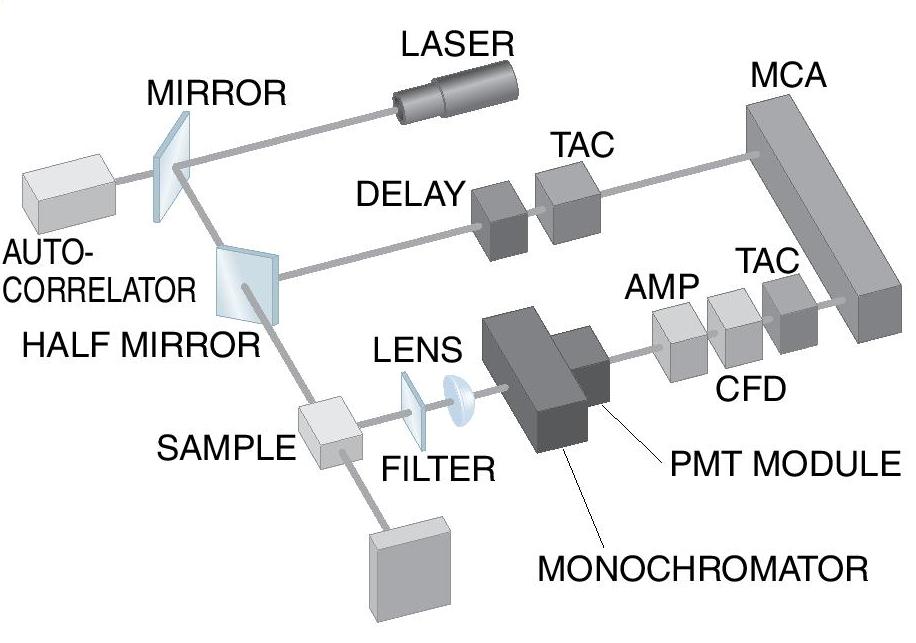
Portable survey meters
Portable radiation measurement devices or survey meters are essential for detecting radioactive substances for public safety in customs inspections, nuclear power plants, and hospitals, etc. Among various radiation measurement devices, the most sensitive type uses a combination of photomultiplier tube and scintillator and offers sensitivity ranging from several ten to hundreds of times higher than Geiger-Müller counters (GM counters). Photomultiplier tubes used in this application must be compact, rugged, and easily coupled to scintillators, and also have low power consumption.
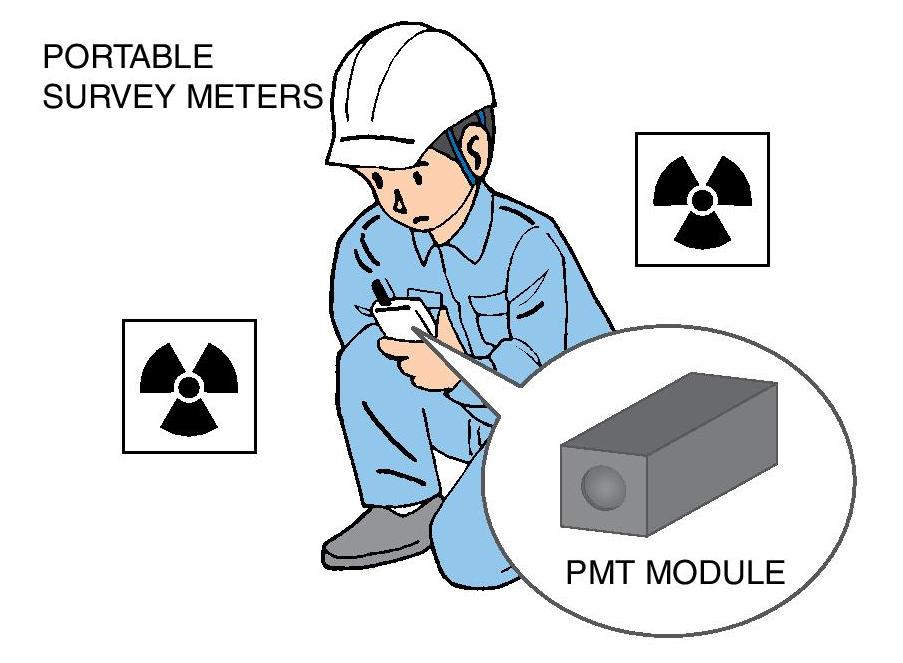
Semiconductor wafer inspection systems
These systems find defects on semiconductor wafers, by scanning a laser beam onto the wafer and then detecting the resulting scattered light to find any debris, dirt or damage on the wafer surface. Advances in semiconductor technology have made lithographic lines on wafers even finer so that even smaller defects must now be detected making these inspection devices an essential tool.
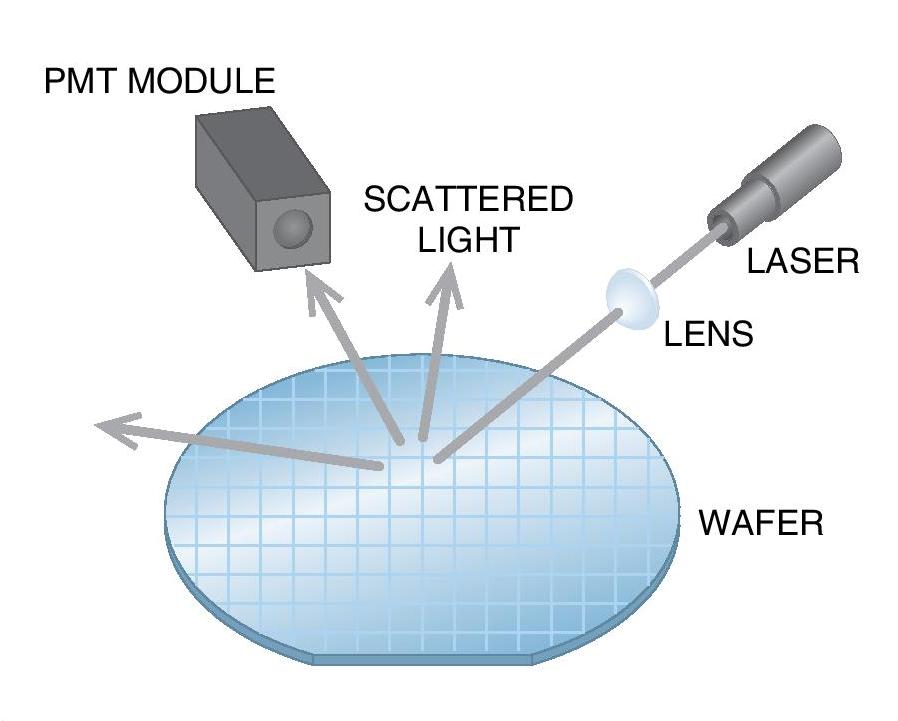
Laser radar
One use of laser radar (often called "LIDAR*") is making atmospheric measurements. A laser beam is emitted into the atmosphere and the light scattered by the "atmospheric molecules" and "suspended elements" then detected. The scattered light is absorbed by "trace gases" during its return and is therefore extremely faint. These "trace gases, and the distribution and concentration of suspended elements" can be analyzed by measuring this faint light. Lidar is actually used in measurements of aerosol and ozone concentrations, CO2, SO2 and NOx concentrations, wind velocity and also the extent of visibility.
